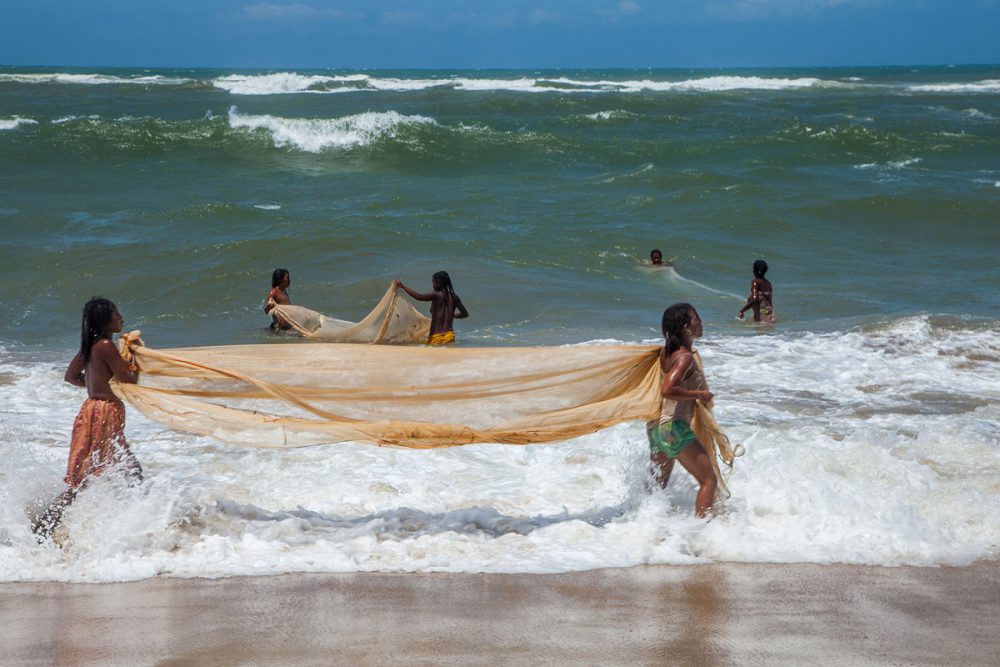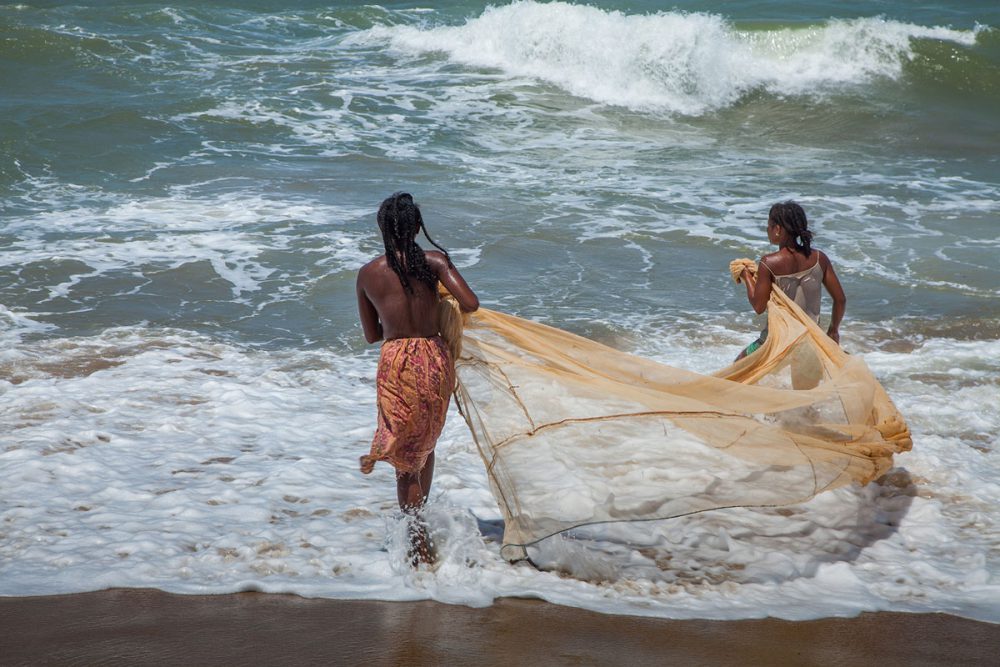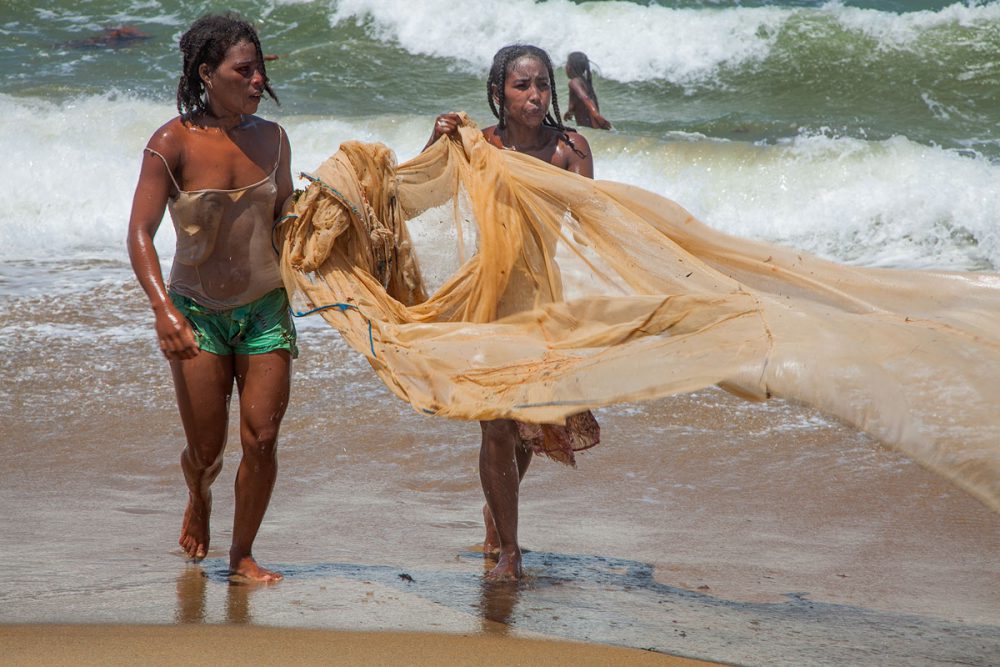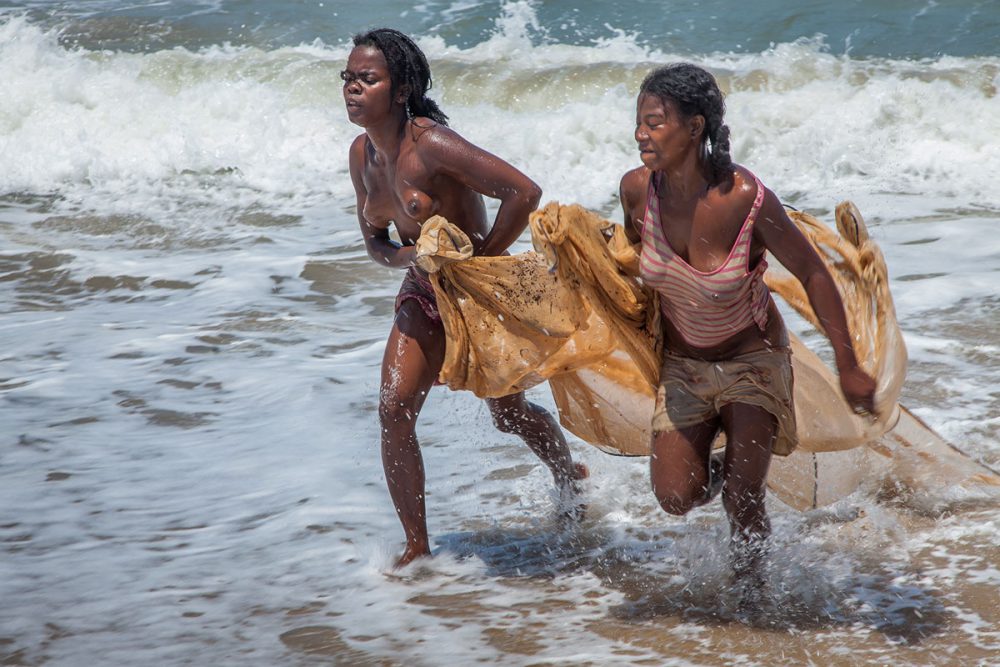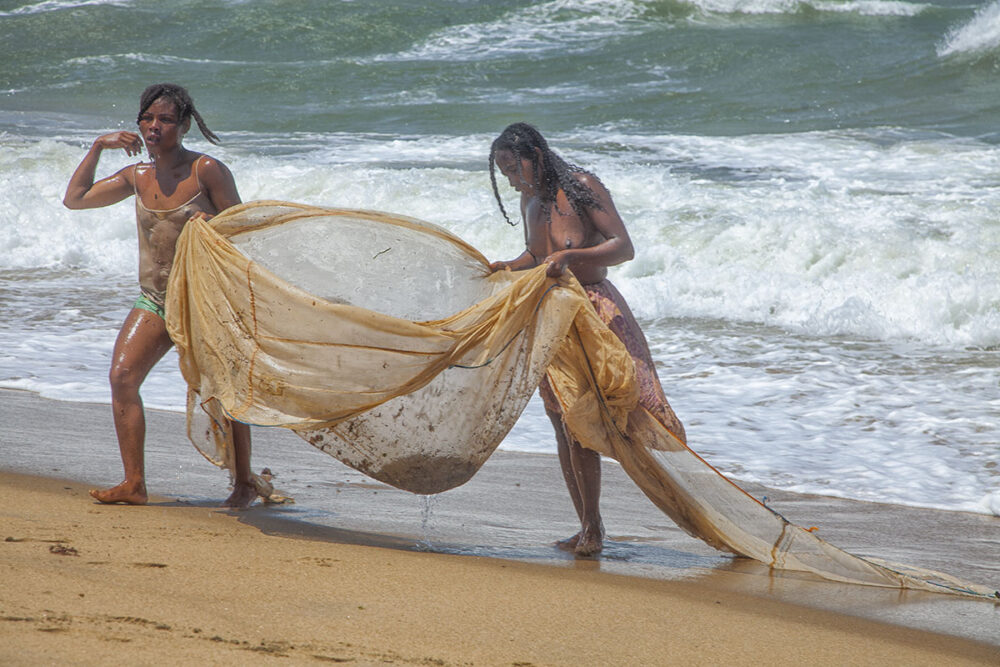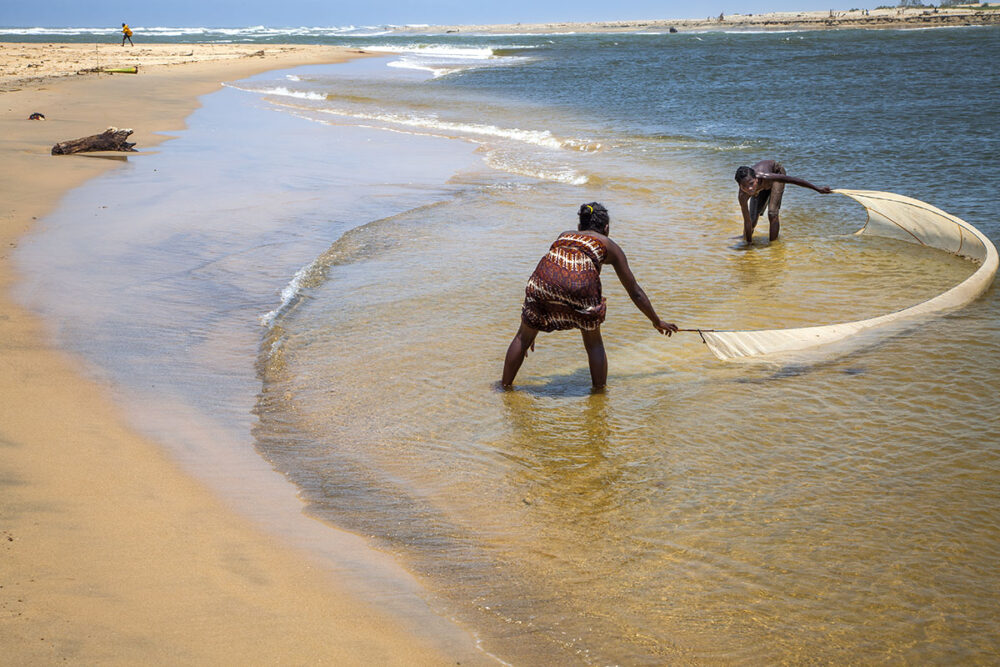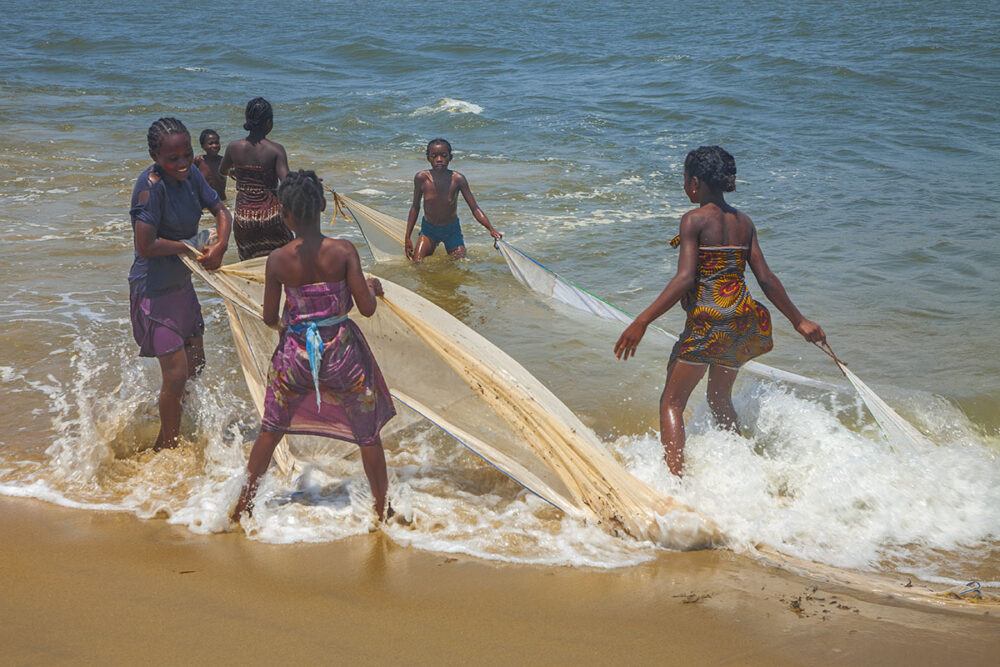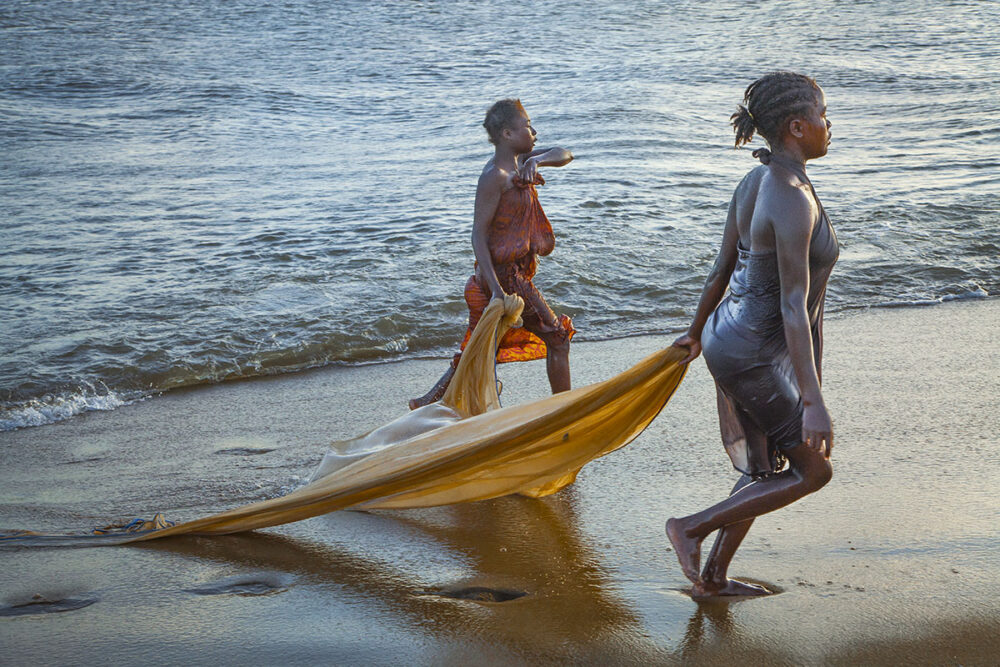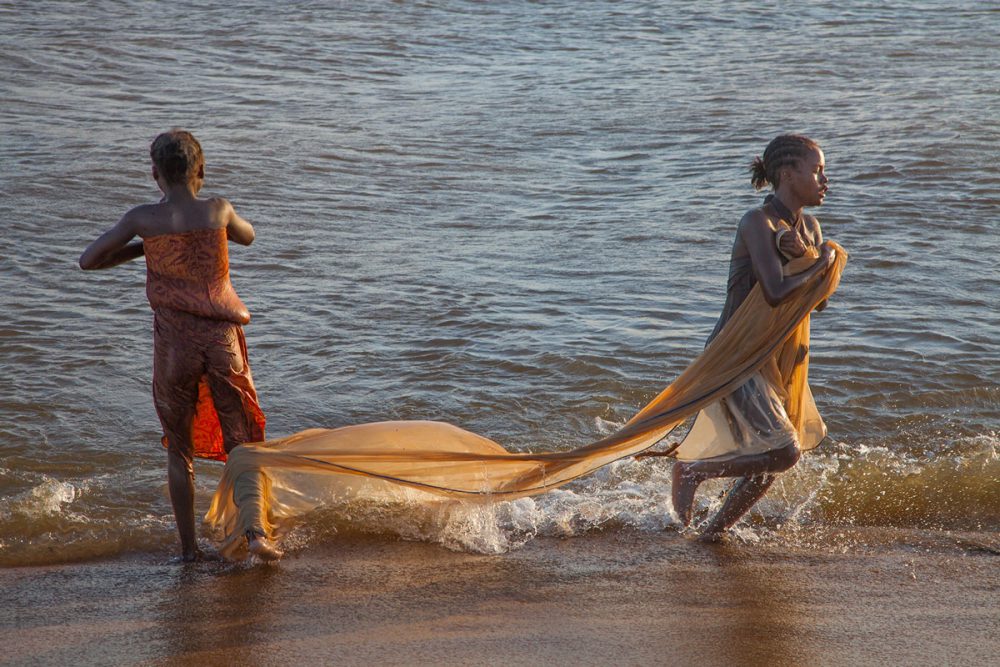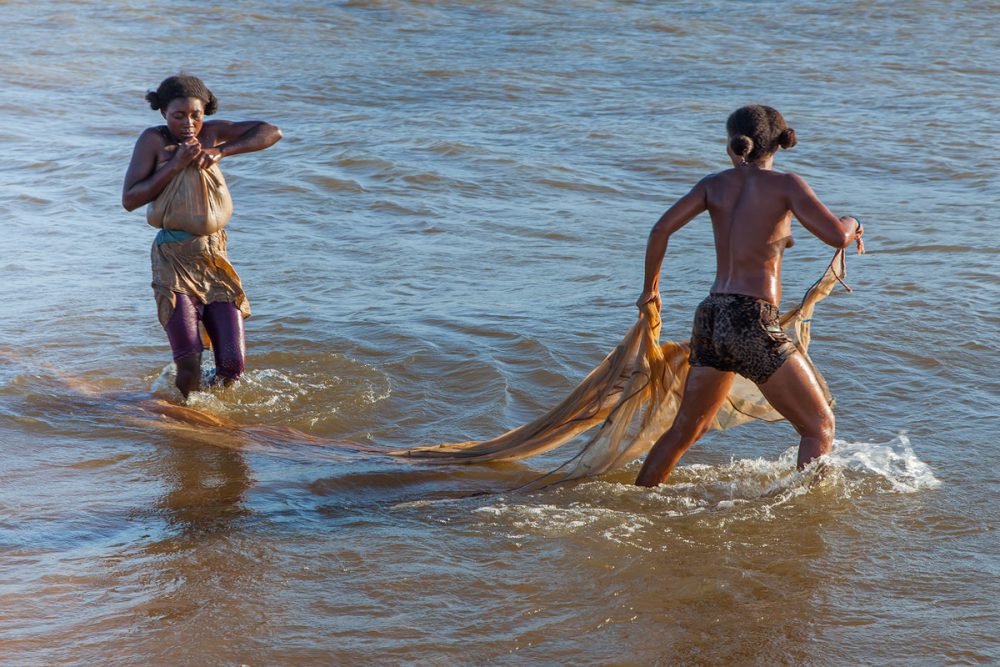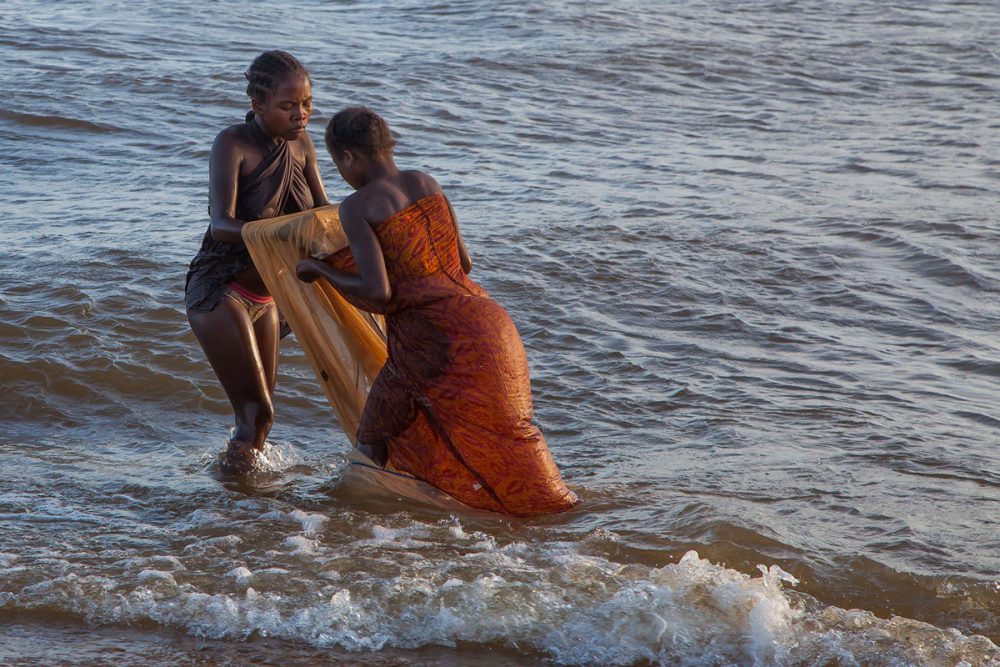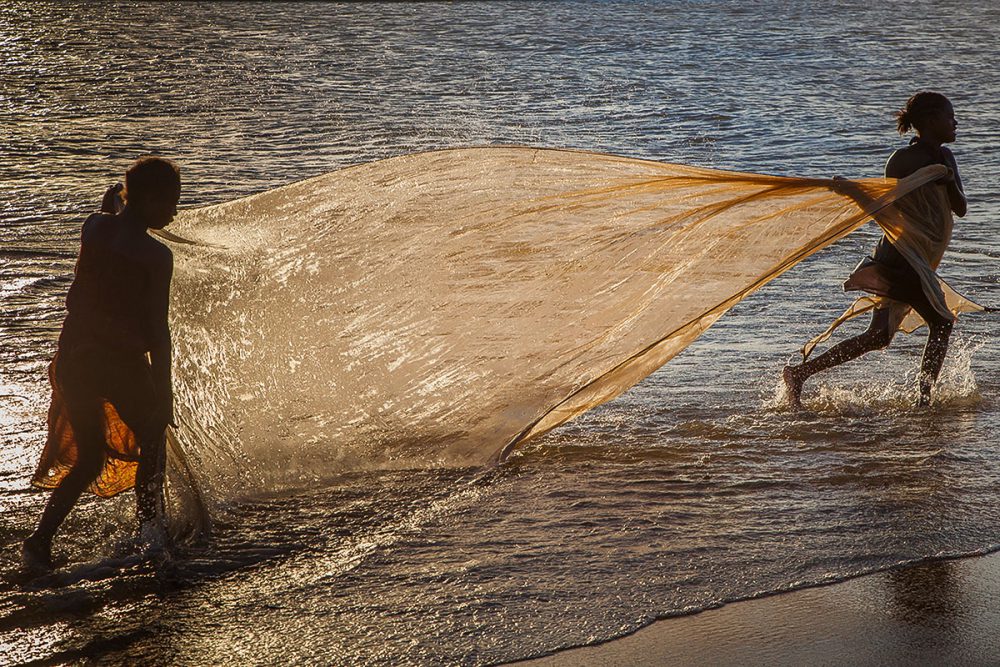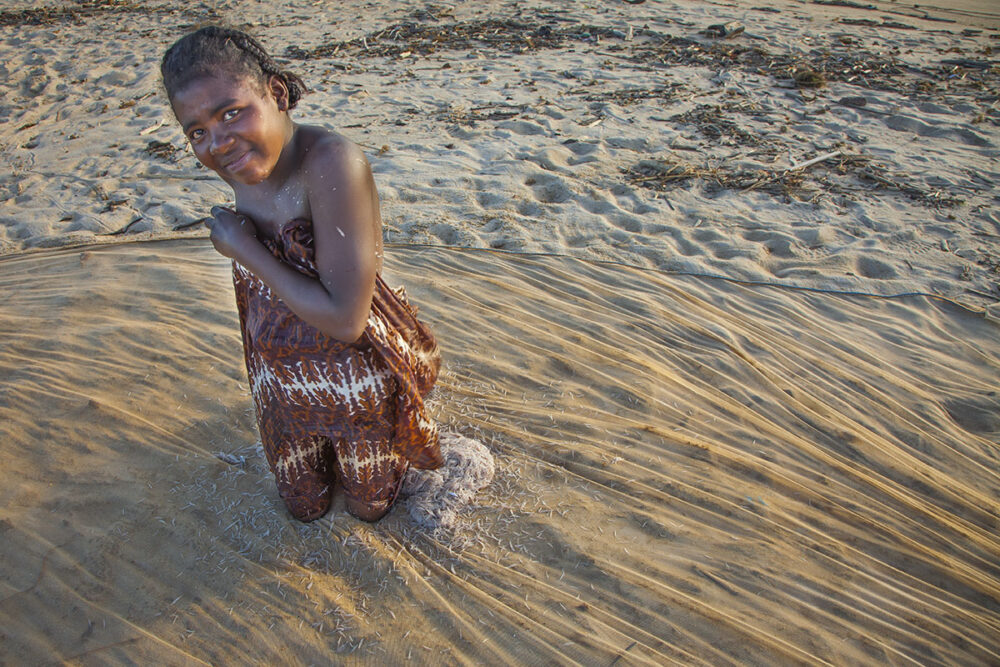Ankatafana is a fishing village in southeastern Madagascar, enclosed by the Indian Ocean and the estuary of the Mananjary river. Here, village life revolves around fishing, by young and old.
Early morning the men set out on the turbulent Ocean in basic proas, without sail or motor, to catch fish, often at the risk of their own lifes (see the project ‘Life in a Fishing Village…‘). The women, operating in pairs, use traditional nets to fish for bichiques in the beating of the Ocean’s waves or in the more quiet estuary of the river. The children help their mothers or try to fish with smaller nets.
Bichique is the alevin of the redtailed goby. This goby has a remarkable life cycle: the fully-grown fish lays his ca. 50 000 eggs upstream between January and June. The larvae are then carried away downstream towards the Ocean. At the October full moon the alevins gather at the mouth of the river to ‘climb’ upstream where the women of Ankatafana try to catch them. Usually they trap the bichique behind the sari around the body. Bichique is the main component of the “cari bishik”, a curry that is highly appreciated in the restaurants of La Réunion and Madagascar.
